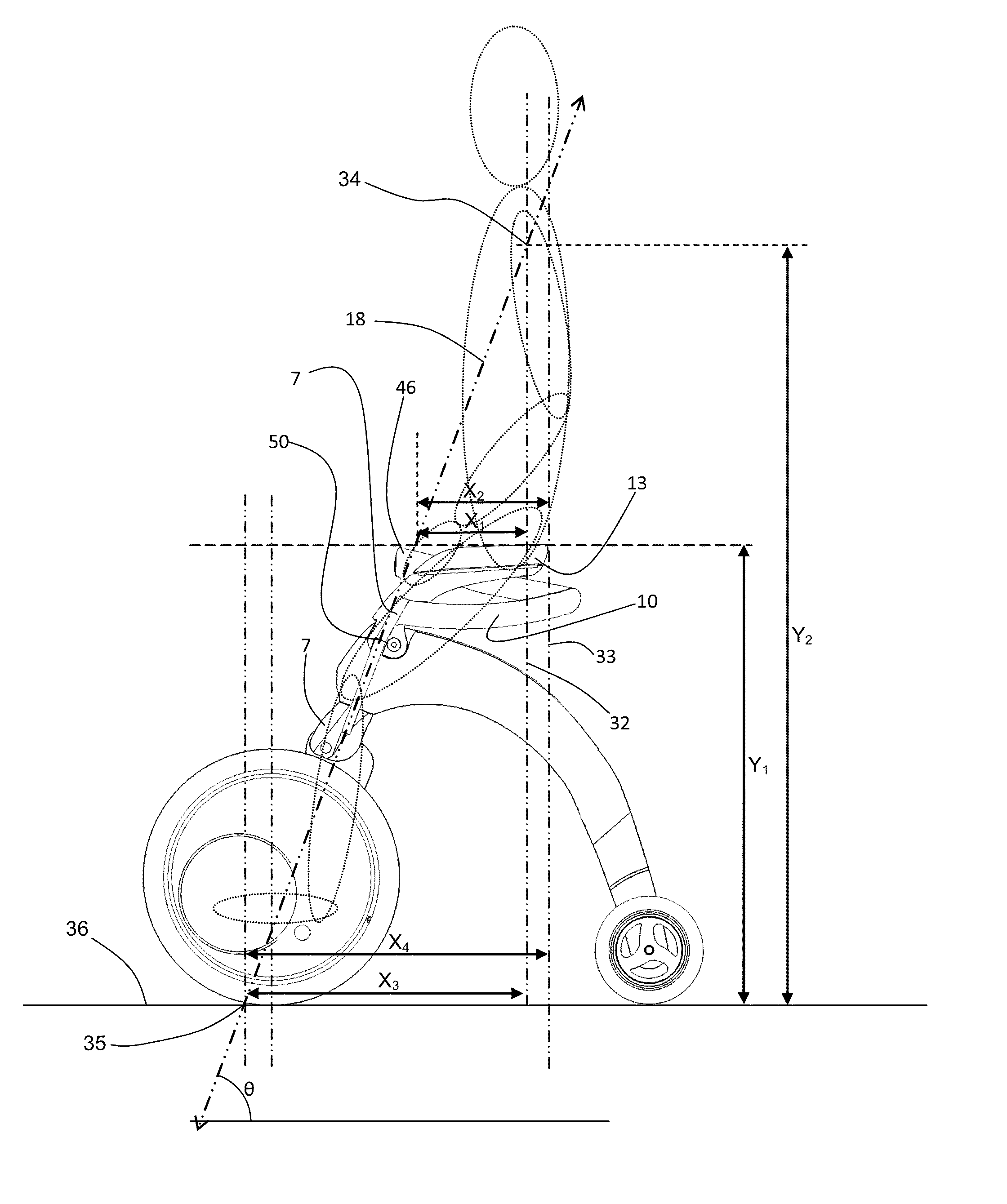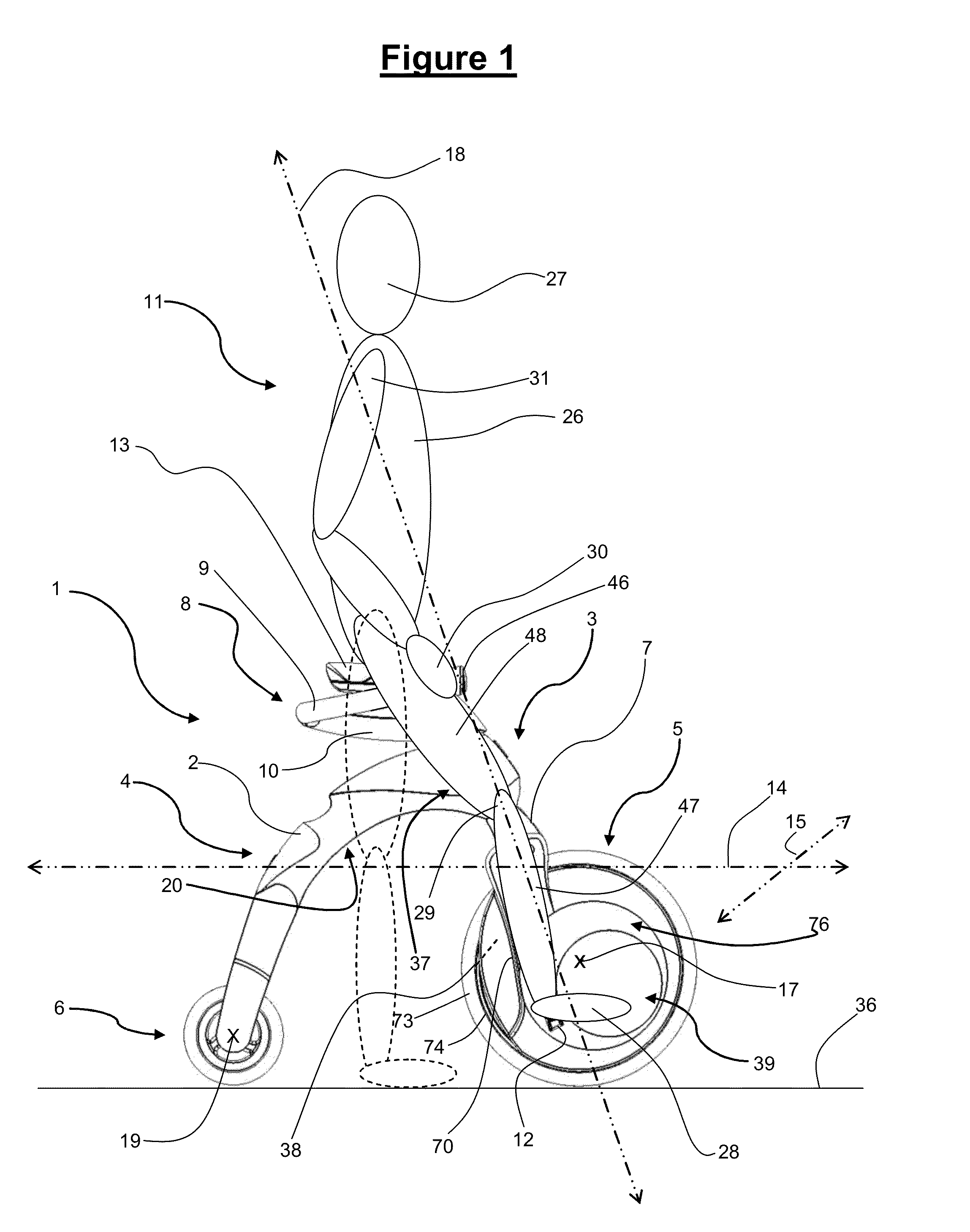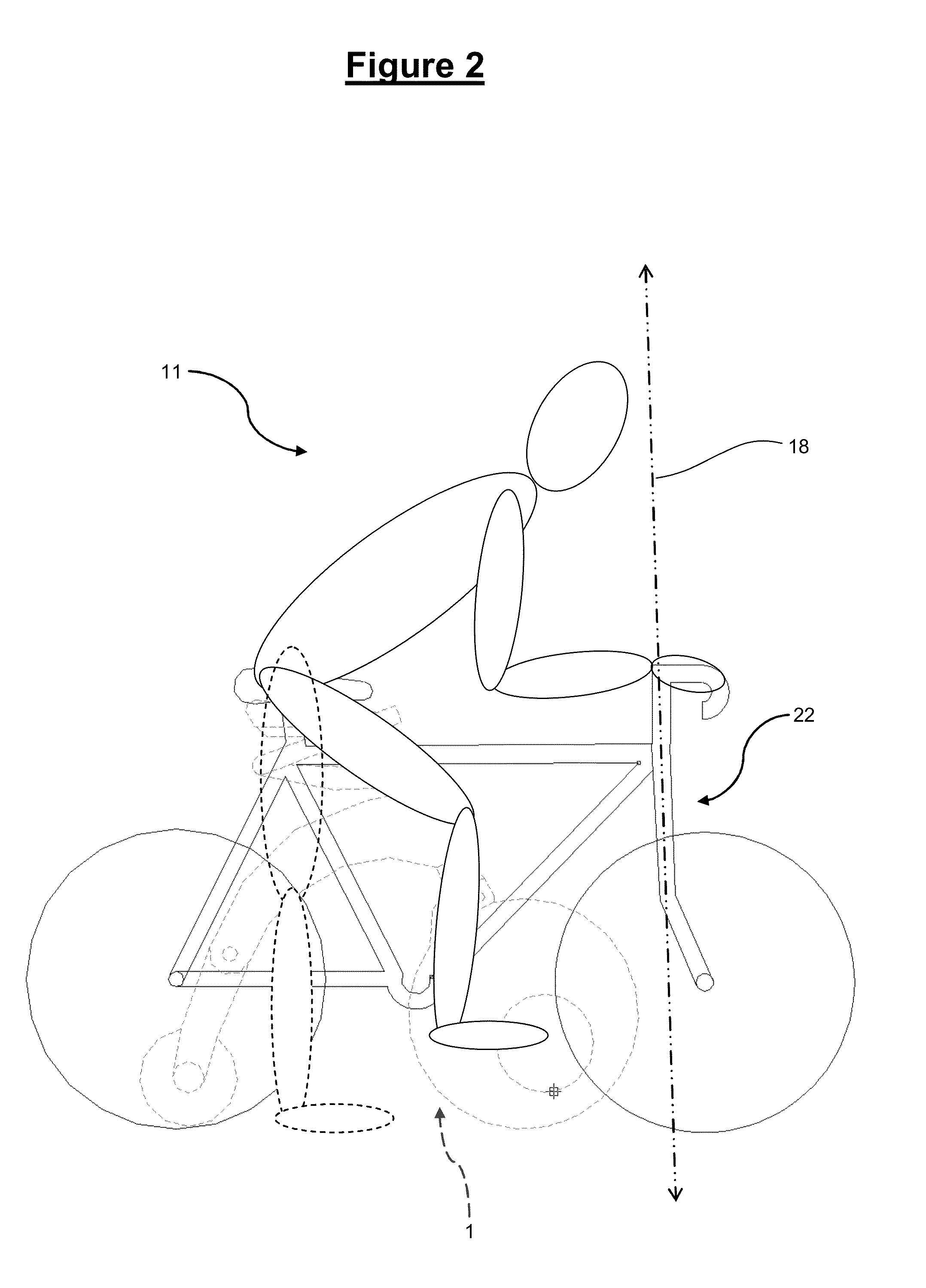The Penny Farthing displayed numerous drawbacks of this design, including speed / efficiency limitations from a direct drive front wheel, difficulties in mounting / dismounting and limited manoeuvrability.
Although significant developments have occurred in materials and ancillary equipment such as brakes, suspension and gears, this basic cycle configuration has evolved little over the subsequent 120 years.
Despite the bias to designs optimised for such sporting origins, the overwhelming majority of cycles are used in non-competitive applications in urban environments for commuting and general transport.
They can also suffer from a
social perception of being staid, old-fashioned and lacking the intangible vicarious credibility of association with more dynamic sporting / adventurous activities.
However, increasing urban congestion, inexorable fuel cost increases and the predominance of workplaces being located in cities has created significant interest in alternatives to motor
vehicle transportation.
However, much to the
frustration of civil authorities, there is significant reluctance amongst individual travellers to lose the freedom of movement offered by individual transport.
This reluctance is so well ingrained in many individuals that they will tolerate extensive traffic congestions, prolonged journey times as well as inconvenient and / or expensive parking options to maintain that perceived freedom.
However, a significant number of potential users are still deterred from urban cycle usage by considerations including;1. impracticability for extended commuting distances without supplementing with
public transport;2. incompatibility with most forms of
public transport;3. storage and / or security issues when not being ridden and / or being carried on
public transport;4. inconvenience of combining with automobiles for multi-mode journeys,5. physical effort required for un-assisted
pedal cycle travel.
Unfortunately, cycles are also unwieldy, cumbersome objects to stow, carry or generally manipulate when not being ridden.
Cycles cause significant handling difficulties for users during ingression / egression of buses, trains, or trams, they may obstruct doorways / passageways, hinder other passengers and possible cause minor
impact injuries and / or clothing soiling from contact with the numerous inflexible projections, chains and the like.
Many public forms of transport cannot accommodate conventional cycles, motor scooters or motor bikes at all, or they must be placed in special freight compartments.
Although occupying far less volume than motor vehicles, conventional cycles
pose security issues for travellers when not in use.
Unfortunately, the very adaptability and simplicity of cycles, vis-à-vis adjustable, quick release fitting / accessories (e.g. seats, wheels, lights, panniers, trip computers and so forth) often requires the rider to partially dismantle the cycle secure each fitting and / or completely detach the items from the secured cycle secured to a rack, post or similar.
Clearly, commonplace procedures such as having to detach the front wheel and place adjacent the rear wheel to enable a security chain / lock to pass through both wheels and having to carry a cycle seat, lights or the like is far from convenient or desirable.
The alternative however, of taking a conventional cycle into a typical office building and negotiate stairwells, lifts, narrow corridors, or office cubicles is also fraught with difficulties.
The attendant overheads of additional showering and / or clothing changes to maintain acceptable workplace personal presentation and
hygiene is often perceived as too inconvenient to warrant the effort in cycle commuting.
In general, the addition of an
electrical drive mechanism adds significantly to the cost and weight of the cycle without in itself addressing the first three deterrents to urban
cycling usage listed above.
An inherent complication with creating a practicable folding
system for conventional bicycle frame design include the numerous protrusions, the lack of stability in most orientations, and the desire to avoid dismantling the drive mechanism (particularly oiled chain drives) during collapsing / erecting.
Several factors have however hindered the widespread public acceptance of prior art collapsible cycles, namely:compromised performance from typical design features including small
diameter wheels, lack of frame rigidity;unwieldy size, weight and
resultant collapsed configuration of ‘full’-sized folding bike frames and wheel assemblies;risk of
entrapment and / or clothing soiling from a chain, gearing, brakes mechanism.
Often involving complex collapsing mechanisms, these cycles are generally difficult to ride for extended distances, or at speed and generally result in highly compromised riding functions, efficiencies and comfort.
Moreover, the wheel
diameter provides a fundamental limitation on the degree of compaction possible without somehow dismantling the wheel itself.
This configuration is however incompatible with many of the above desirable characteristics for a folding cycle.
Consequently, usage of small diameters for both wheels is commonly employed to reduce the folded cycle volume, with the
resultant drawbacks discussed above.
Moreover, for pedal driven cycles, achieving a worthwhile degree of compaction from a reduced wheel size creates an impractically small pedal
crank length for ergonomically efficient usage or requires the use of a conventional
chain drive with the pedal
crank exterior from the wheel.
The presence of an exposed chain further reduces the practicality of carrying a collapsed cycle as a backpack or satchel without the risk of soiling the user's clothing.
However, the reduced stability due to the riders high centre of gravity increase the
vulnerability of overturning during braking or when striking an obstruction.
The risks associated with a rider pitching forward are exacerbated by the conventional placement of the handlebars in front of the rider and above their knees causing the rider to strike the handlebars or become entangled in the
machine, trapped by the handlebars.
However, one of the difficulties with direct front-wheel-drive, front-wheel-steer pedal cycles of this type, particularly when starting from rest, is that pressure applied to the pedals exerts a destabilising steering effect.
Prior art powered cycles suffer from the aforesaid drawback of pedal cycles plus the additional complexity, cost and weight associated with incorporating the
power unit into a collapsible cycle configuration.
 Login to View More
Login to View More  Login to View More
Login to View More 


